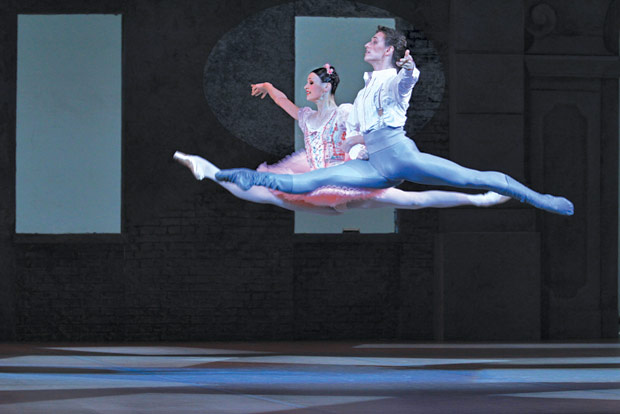
© E Fetisova. (Click image for larger version)
Moscow Stanislavsky Ballet
Roland Petit’s Coppélia
London, Coliseum
11 July 2013
www.stanmus.com
www.eno.org
This Coppélia is Igor Zelensky’s tribute to Roland Petit, who choreographed it for the Ballet National de Marseille in 1975. It was mounted for the Stanislavsky Ballet, which Zelensky directs, by Petit’s right-hand man, Luigi Bonino, in 2012, a year after Petit’s death, using the original sets by Enzio Frigerio and costumes by Franca Squarciapino.
Though very French, the production suits the Moscow-based company, which prides itself on dancing works by contemporary European choreographers. It’s more adventurous than the Bolshoi, less concerned with hierarchy, lighter-hearted. Petit declared himself bored by 19th century balletic paysannerie – all those prancing peasants waving enthusiastically at each other. So he set his Coppélia in a fin de siècle garrison town, where the ensemble numbers are performed by soldiers and ‘ladies of the town’. He did away with the traditional character dances, czardas, mazurka, polonaise, that Coppélia in 1870 was possibly the first ballet to include. Instead, he used Délibes’s music for ooh-la-la musical comedy routines, closer to burlesque than ballet.

© E Fetisova. (Click image for larger version)
Petit’s staging in Frigerio’s set suggests a popular entertainment: a puppet show, a Harlequinade with commedia dell’arte characters. Swanilda is Columbine, the girl adored by a loser who can’t win her – Coppélius as Pierrot; she favours a handsome young bounder – Franz as Harlequin. Délibes’s overture waltz is played as if on a barrel organ, summoning the audience to roll up. A half-curtain across the colonnaded barracks set is drawn aside: let the show commence.

© E Fetisova. (Click image for larger version)
We are introduced to Franz, a soldier still in undress, smoking a cigar at the start of the day and the ballet. Sergei Polunin, standing insouciantly centre-stage, launches into a solo that tells us about the character and the dancer. He’s a show-off, wrily aware of his handsome looks and equally handsome technique, which he can take for granted. He doesn’t seem to have a care in the world, though he may be deluded: Franz is eyeing an impassive girl high up in a window rather than paying attention to his down-to-earth fiançée.
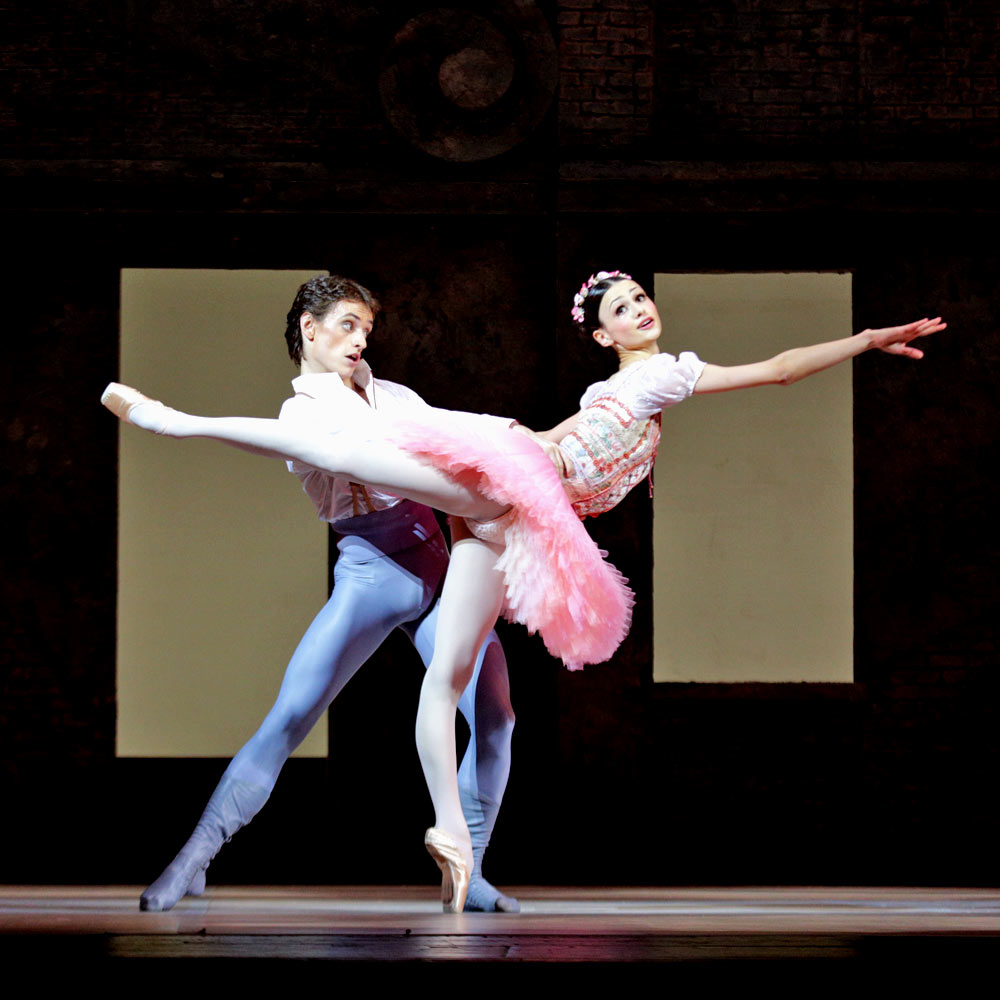
© E Fetisova. (Click image for larger version)
Swanilda (Kristina Shapran on the first night) soon has her own solo, addressed to the audience. Shapran, tall and willowy, is no pert soubrette. She’s a bit shy, still unformed as a woman, with spaghetti limbs kept under control by her Vaganova training (Shapran graduated from the Vaganova Academy as recently as 2011). Her Swanilda is going to be a handful for Polunin’s Franz: she makes emotional demands of him in their pas de deux and, a hyper-flexible dancer, she’s tricky to partner. Shapran knows where her centre of balance is, but Polunin doesn’t. Though Franz may indeed appear reluctant to engage with Swanilda in Act I, Polunin is still a clumsy partner.
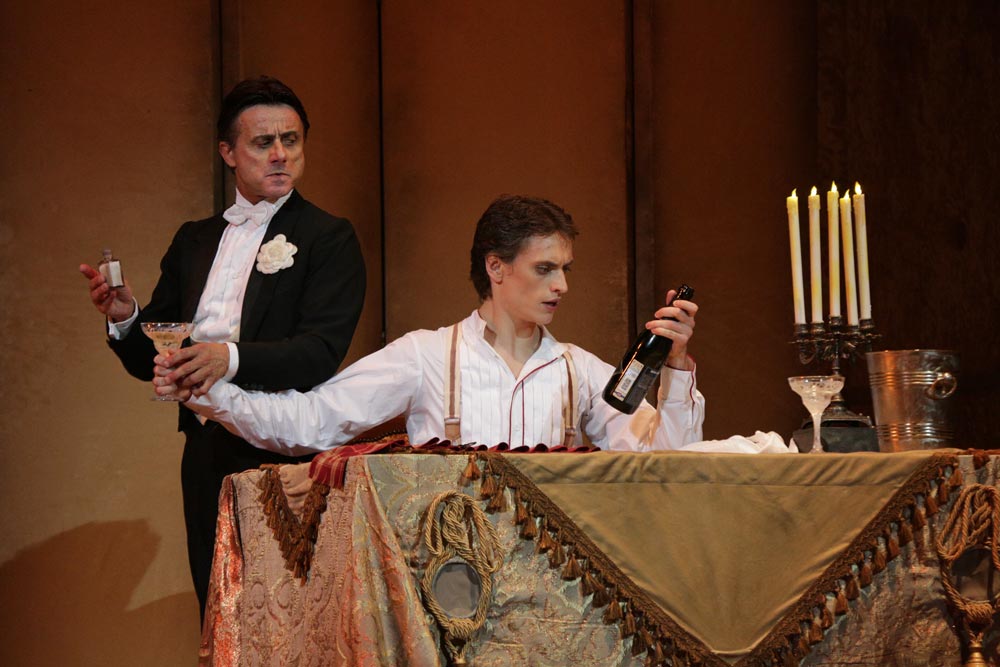
© E Fetisova. (Click image for larger version)
The real hero of the ballet is Coppélius, a role performed by Petit himself until he was 73. Debonair, no longer young but far from doddery, Coppélius is an enigma, neither mad nor really bad. He has fabricated a life-size, life-like doll in the image of Swanilda. In Act II, he dines with her at his table: he lights candles, offers her champagne and dances with her attached to his dapper shiny shoes. Is he pervy or merely pathetic? Or is this a choreographer’s ultimate fantasy figure: a female instrument who bends to the creator’s every whim, never tires, argues or storms out, who can be put back in her box, ready to repeat the next performance? Her knees even flex backwards – an anatomical impossibility that Lynne Seymour had to remind Kenneth MacMillan when he was working on the rape scene in The Invitation.
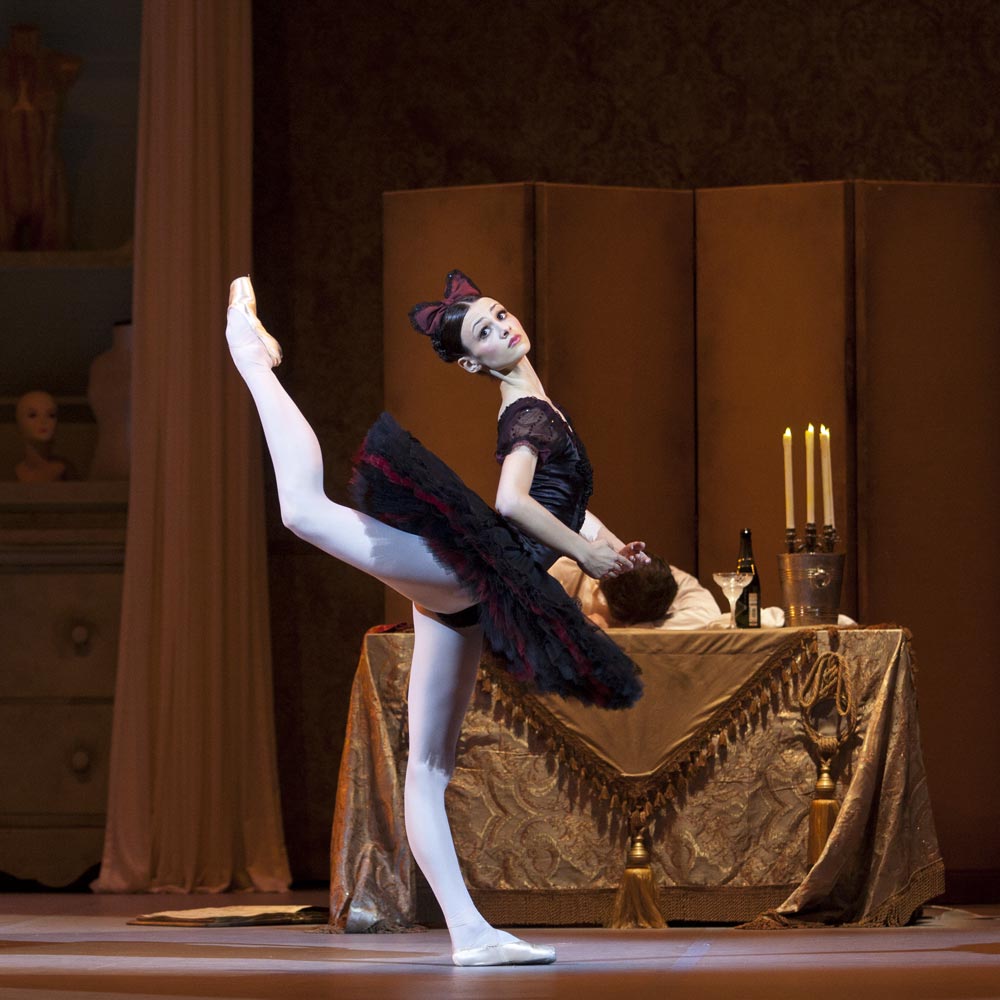
© E Fetisova. (Click image for larger version)
The interpretation of Coppélia as the choreographer’s puppet must have resonated when Petit danced the role. Other performers, including the Stanislavsky Ballet’s Anton Domashev, have turned Coppélius into a cross between Charlie Chaplin and Groucho Marx: sympathetic but ludicrous. He has to be played with a light comic touch (like Alain in La Fille mal gardée) or the production will flounder with worry about his future. His illusions of happiness have been cruelly betrayed by callow young lovers. Can he recover himself and his surrogate love-object? How much do we care?

© E Fetisova. (Click image for larger version)
Here’s the problem. Petit’s Coppélia is heartless. We’re not closely involved in the fate of any of the characters. Franz and Swanilda haven’t really matured into true, lasting love as a result of their adventures. The locals aren’t bound up in their marital union. Swanilda’s six girlfriends, identically dressed like her in fluffy pink tutus, are animated marionettes. They mince and wriggle saucily, feet skimming the stage, though not quite needle-sharply enough to be admirable. The soldiers are comic cut-outs, yanked into action as if by invisible strings. Their female followers are good-time girls, blowing kisses and raising their knees, ready for a can-can were Délibes to oblige. His best tunes have been packed into two acts instead of three, rousingly played by English National Ballet’s orchestra, who know the music well, albeit not in the same order or tempi. (The conductor is the Stanislavsky Ballet’s Anton Grishanin.)
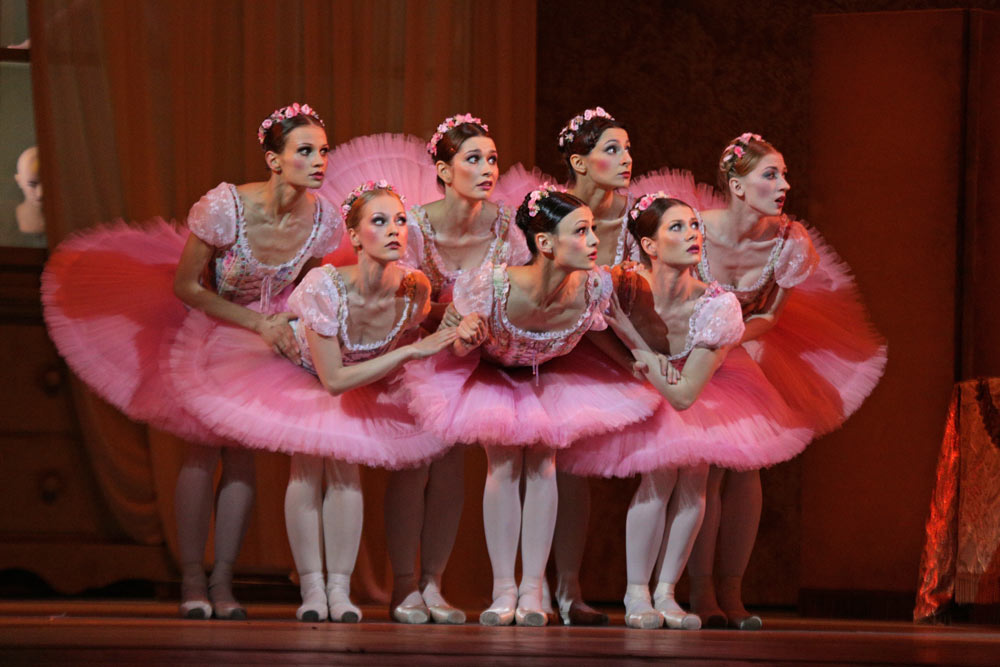
© E Fetisova. (Click image for larger version)
The pleasure lies in the quality of dancing rather than interpretation. Petit was an expert at animating a stage, a musical-theatre choreographer who delivered what audiences expected, with over fifty productions under his belt. He also provided ingenious steps for gifted dancers. Franz is a virtuoso role, performed by ballet’s best, amongst whom Polunin must be rated. His technique is clean and clear, his batterie and bravura leaps elegantly light and unforced, his landings cushioned. His stage personality is bright, outgoing and appealing – a complex performer portraying a comic simpleton. He doesn’t connect much with Shapran’s Swanilda, who is more confident on her own. Though she can accomplish the pirouettes and speedy petits pas, not easy for a lanky dancer, her bendy legs and feet make her all too plausible as a manipulable doll. In the end, it’s unfair on the real-life performers that the most memorable scene in the ballet is Coppélius’s ecstatic waltz in Act II with his ideal artificial woman attached to his toes.

















You must be logged in to post a comment.